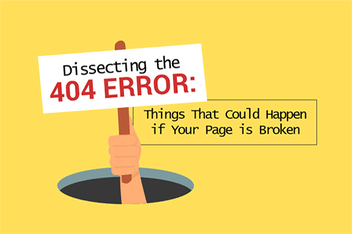The Grammar Police Are After Your Website...
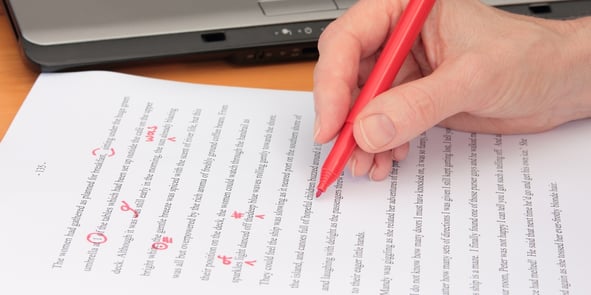
I’ve talked before about how your website makes a first impression that lasts well beyond that initial experience. While that first, gut reaction may be triggered mostly by appearance, content will solidify whether they leave your site or stick around to find what they need.
To start, let’s define “content.” When we’re talking about websites, it essentially means every word that appears on the site, from headlines and introductory text to blogs and downloadable resources. Good website content (or copy, if you prefer that term) has four characteristics. It is on-message, educational, valuable and well-written. (Click to Tweet!)
On-message
If a website visitor has to look hard, or even twice, to figure out what you do, your content is not on-message. Within seconds, they should be able to understand what you do. They should be able to easily determine what page they are on and what it’s about. Clear messaging will also make it clear what they should do next, and why they should do it on your site and not your competitor’s.
-
Consider your headlines and subheads - they should be clear and free of gobbledygook.
-
Include obvious calls-to-action, "next step" cues and navigation to guide visitors through your site to the information they want and need, and toward becoming leads.
There is no question when you arrive at HubSpot’s home page (or interior pages such the one below one describing their email marketing software) what they do and what they want you to do.


This site on the other hand? Honestly, I really have no idea what it is offering or selling. And this is the home page.
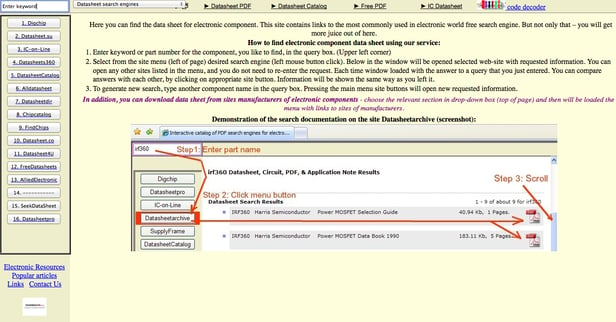
Educational
Let’s not, however, confuse “on-message” with pushy, product-centric content. Especially if you are in the B2B field, website visitors likely arrived on your site initially seeking to learn, not buy.
Provide content that educates before it sells, and you will gain loyalty and establish your position as a leader. That content could take the shape of blog posts that explain how to choose a provider in your industry, white papers sharing original industry research or data, or a case study sharing a success story.
In the example below from Primaris, the company is offering educational material for its healthcare provider clients, but even the resources page is helpful, with specific instructions on how to use it to find precisely the information needed.
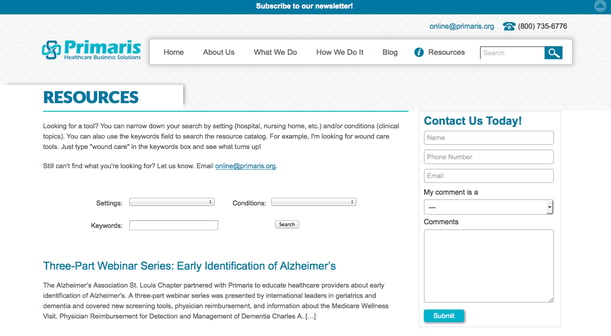
Valuable
What makes content valuable? Valuable content solves problems and can’t be found anywhere else. Even in your product description copy, you can provide value by using a “this is how we help you” approach rather than a “we are the best” focus.
Emphasize information that your company can offer that isn’t available anywhere else. TeleVox offers a wealth of information through its website based on its Healthy World Reports, featuring original research into the healthcare industry. This exclusive data highlights their commitment to not only their healthcare clients, but the patients those medical professionals serve.
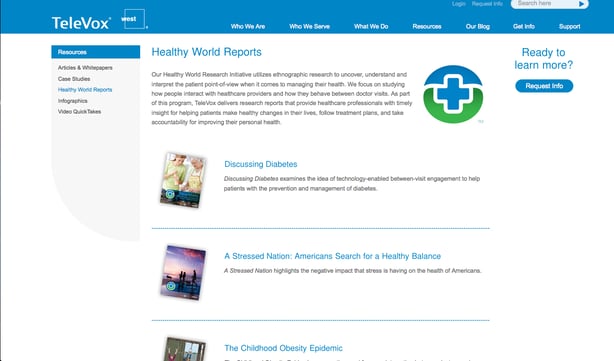
Quality
The online and social media world may love to take jabs at “grammar police,” but when it’s time to write your website content that is exactly who you want working for you. Misspellings, grammatical errors and other simple mistakes reflect poorly on your business and can leave an impression that you lack attention to detail.
Maybe it’s just me, but the first things that jump out at me in the roofing website below —well, after the giant AdChoices ad that dominates the page—are the first two sentences: “Roof is the vital section of the house. It will give you security of your life.”
Cringe.
Awkward, incorrect wording does not instill any confidence in this site’s ability to offer me useful and accurate information.
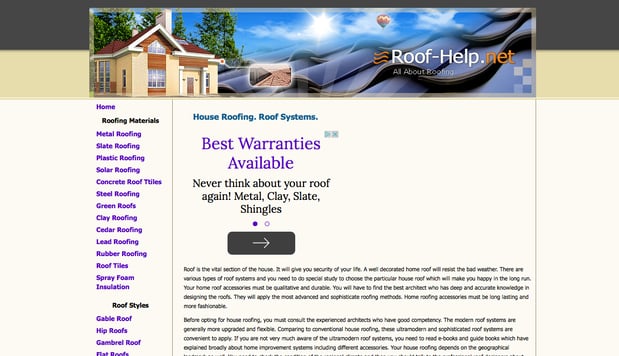
But quality goes beyond grammar. It also means writing for people, not search engines. Keep your copy engaging and entertaining — keywords are fine, but they shouldn’t be obvious or overdone.
Bring up your website right now, and look at it with a new visitor’s eyes. What do you see? If your content isn’t on-message, educational, valuable and well-written, put your editing skills to work and focus on giving your visitors information they want and need.
Good content is just one of the “must-haves” that make a website effective in supporting your business’s marketing and sales goals. Find more essentials in 25 Website Must-Haves, a free ebook. Download it here.
-1.png?width=1652&height=294&name=Jones(RGB)-1.png)








